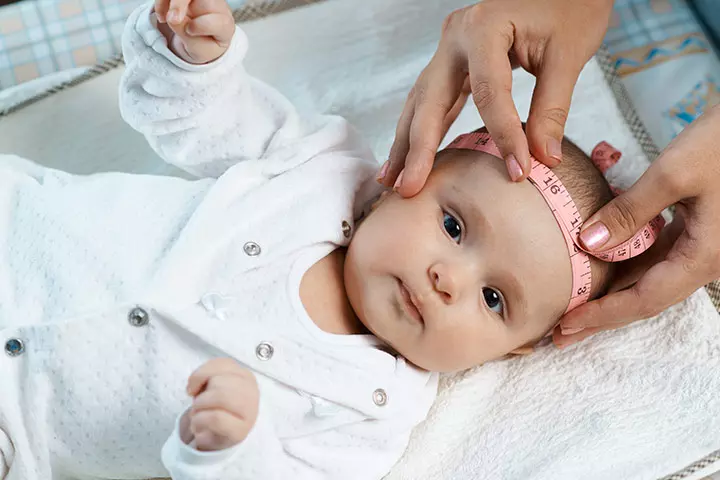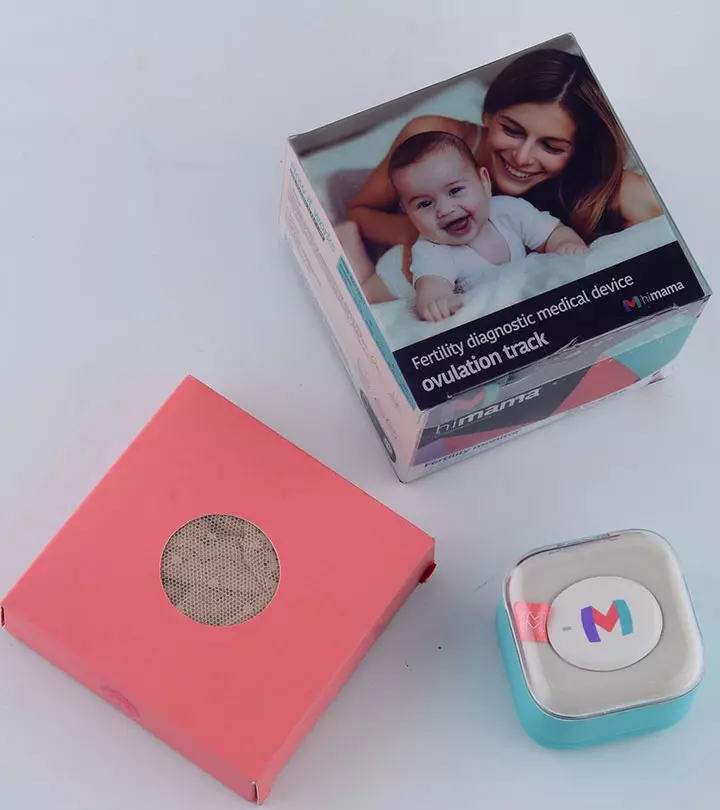

Image: Shutterstock
After waiting for nine whole months, a mother is elated when her baby finally arrives into the world. However, more often than not, parents are amused to see their little one’s head. This is because they are born with a stunningly elongated head!

Doesn’t this make you wonder what really happens to your newborn’s head at the time of birth? It is incredible how a human body functions – be it the mother who is in throes of labor or the baby who enters into the sphere. To elaborate further, your little one’s head is specially designed in a manner that he/she can pass through the birth canal smoothly.
Your Infant’s Head
Image: Shutterstock
For a newborn to enter into the birth canal easily, his/her head should be of the right size. Also, the head should be flexible enough to go through the canal. That is why the little infant’s skull is soft with appropriate spaces between the bone plates (1). These gaps are referred to as the cranial sutures. The anterior (front) and the posterior (back) fontanels are the particularly large gaps. You might have felt it too while touching your baby’s head.
These soft spots in your baby’s head are usually nothing to be scared of. The cranial bones continue to be apart for another 12-18 months. But, then grow gradually as part of any baby’s normal development, and remained connected throughout the adult life. In fact, the sutures and fontanels present in an infant’s head are needed for the growth and development of the brain (2).
Before Labor
Image: Shutterstock
Your body, as well as your baby, start preparing for the big day weeks before the labor. By the 36th week of gestation, most babies assume a head-down position (3). At this time, the back of his/her head will be towards the forepart of your belly. This position is considered to be the most convenient for childbirth since the baby will comfortably fit into your pelvis’ curve. Somewhere after the 37th week of pregnancy, the baby begins to descend into the pelvis in order to prepare himself/herself for the birth (4).
When the baby is in a head-down position, he/she can put pressure on the cervix. The skull bones even mold to fit into its surroundings. The process helps them be prepared for the transit through the birth canal.
During Labor
Image: Shutterstock
The contractions that you experience during the labor initially work to cause thinning and dilation of the cervix (5). The top portion of the uterus contracts to push the baby’s bottom down towards the dilating cervix. In this process, the baby gradually moves into the birth canal (6). In the labor’s second stage, the contraction propels the baby to move through the birth canal. The fontanels present on the head permits it to fit in that narrow canal. The head crowns as its widest part reach near the vaginal opening (7). The vagina will also stretch a little to accommodate the baby’s head while it is coming out.
Since your little one’s head accommodates to pass through the birth canal, it might take the shape similar to a cone. Your baby’s head will mostly regain its normal shape within six to eight weeks post birth (8). Even during the C-section delivery, the baby’s head might have already molded to fit into the mother’s pelvic area. As a result of this, there are chances that his/her head might get misshapen too. Especially in scenarios where the C-section delivery was not pre-planned.
You might be scared whether or not it hurts your baby? Don’t you worry! Since your baby’s skull is designed to fit through the birth canal easily, it is unlikely that the process causes him/her any pain. Though we can’t be really sure what a baby feels during labor, he/she might only feel a slight squeezing sensation.
Being a mother, we know that you feel the urge to understand as much as possible about your tiny angel. We hope that we were able to satisfy your curiosity in some way. Happy motherhood!
Community Experiences
Join the conversation and become a part of our nurturing community! Share your stories, experiences, and insights to connect with fellow parents.















